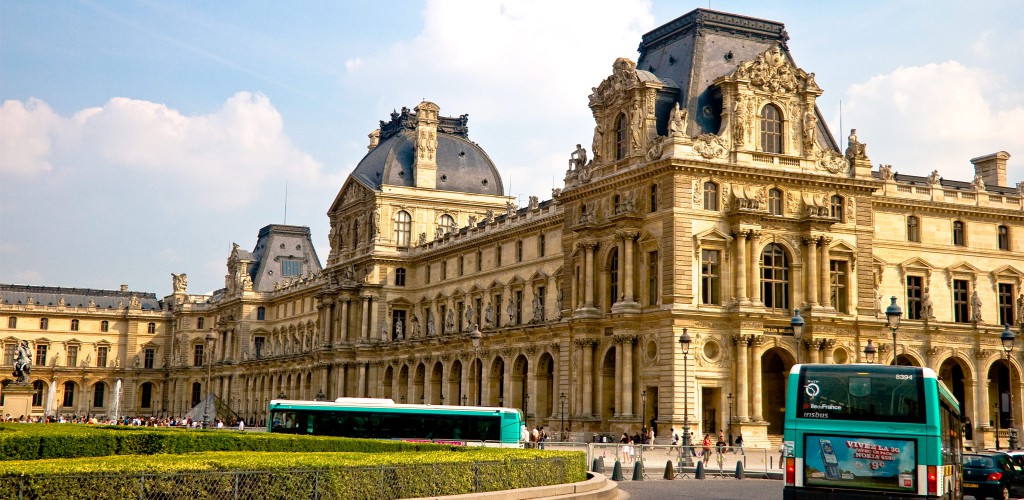The Louvre is perhaps the most famous art museum in the world - and that means big crowds. Not only are the halls typically swarmed with tourists, but the Louvre is a sprawling museum, with 35,000 objects spread over nearly 700,000 square feet!
If you've snagged some cheap business-class tickets to Paris but only have a few hours to spend at the Louvre, you don't want to whittle those hours away navigating noisy crowds or stressing about seeing everything. We've compiled the top five can't-miss works of art in the Louvre that you should make a beeline for during you trip, and, to help you know what you're looking at, provided a quick run-down of each.
1. "Aphrodite"
This famous statue is also known as the "Venus de Milo," nicknamed as such for its mysterious discovery on the island of Melos in 1820. Elegantly draped in cloth, the goddess stands slightly shrugged and with attitude - or, to get technical about it, in contrapposto stance. Its classical style and unique positioning is indicative of the late Hellenistic Period and exemplifies the exciting way artists of the era were combining innovation with tradition.
2. "The Winged Victory of Samothrace"
Seeing "Samothrace" at first sight is an arresting experience. The sculpture towers over viewers, who can only gaze up at the goddess from her feet. This work is unbelievably old, dating from the early second century BC. It portrays the goddess of victory, Nike, with her wings dramatically thrown back against the oncoming wind, and was originally located on a hill overlooking the Sanctuary of the Great Gods on the island of Samothrace. This sculpture is one of the masterpieces of the Hellenistic sculpture tradition and can't be missed.
"3. Psyche Revived by Cupid's Kiss"
Placed near a sweeping window so it can be bathed in natural light, the magnificent "Psyche Revived" sculpted by Antonio Canova tells a story of deep emotion and romance. Psyche, laying on the ground, has just been awakened from an eternal sleep by Cupid, who embraces her. Canova captured forever a moment in time between these two lovers, and the work is considered a masterpiece of Neoclassical sculpture. Make sure you walk around the entirety of the sculpture to appreciate the immensity of Canova's talent and to notice the little details that clue the viewer into the story taking place.
4. "Liberty Leading the People"
You've likely come across this painting by Eugene Delacroix before - it's one of the most famous symbols of impassioned patriotism. Painted in September 1830, "Liberty" depicts the uprisings in Paris two months prior that led to the dethronement of the king. Liberty is bold and unafraid, and she waves the French flag above her, the design of which came to use during the French Revolution. Notice the towers of Notre Dame in the background, a symbol of freedom, and the artist's balanced use of blue, red and white throughout the painting. "Liberty" demonstrates Delacroix's skill at combing allegorical and historical elements in his paintings to express a point, and in fact, the artist helped protect the Louvre's collection during the revolution.
5. "Portrait of Lisa Gherardini, also known as the Mona Lisa"
Of course, no visit to the Louvre would be complete without seeing the Mona Lisa. The portrait is believed to be of Lisa Gherardini, the wife of a cloth merchant in Florence, and is the earliest Italian portrait to closely depict the subject at half-length, rather than focusing on portraying solely above the shoulders. Mona Lisa's enigmatic smile has bewitched viewers for centuries, and the same is still true today. Be warned - the painting is nearly always swarmed by crowds and is set behind a thick, clear covering. Many people are also caught off guard by how small the painting is, too, but battling the crowds for a few minutes is worth it to see this masterpiece.
